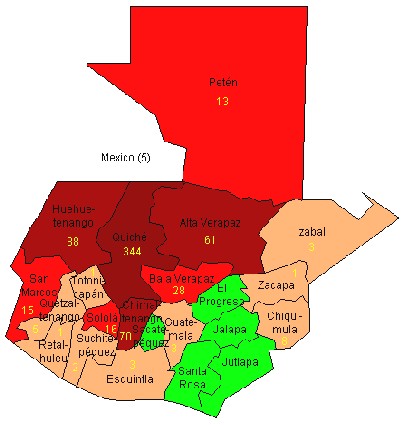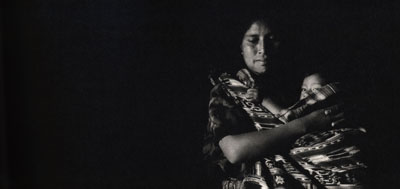Historical Context
The Mayan civilization flourished in what is now Central America and Guatemala, during the first millennium A.D. until the Spanish colonisation. In 1821, after almost three centuries as a Spanish colony, Guatemala won its independence. During the second half of the 20th Century, the country experienced a succession of military and civilian governments supported by landowners, conservatives and the Catholic Church. In 1871, General Justo Rufino Barrios launched the “Liberal Revolution of Guatemala.” He modernised the country’s economy, improved trade, and introduced manufacturing and new crops, such as coffee. From 1901 onwards, U.S.-based merchants and businesses such as the United Fruit Company, began to play a dominant role over Guatemala’s economical as well as political life, leading the way to an increasing American interference in the country’s internal affairs.
In 1944, Dr Juan José Arévalo was elected. Under his presidency, Guatemala experienced a time of unprecedented political freedom and progressive social reforms. Arévalo’s "Christian Socialist" policies, inspired by the American New Deal, were criticized by landowners and the upper class as "communist." In the context of the Cold War, Guatemala’s political change was perceived as a threat to the United States’ political and economical interests. Consequently, from the 1950s through the 1990s, the U.S government directly supported Guatemala's army with training, weapons, and money to suppress leftist movements.
Civil War (1960-1996)
In 1954, after the Guatemalan government instituted a decree which expropriated large tracts of land owned by the United Fruit Company, a small group of Guatemalans (landowners, the old military caste, and the Catholic Church) supported by the Central Intelligence Agency (CIA) overthrew the president. From then on, anti-communist military regimes were overthrown by new, more autocratic ones, in turn challenged by emerging leftist guerrilla groups, leading to a protracted civil war.
Map of documented massacres during the civil war


Source:Commission for Historical Clarification - "Guatemala: Memory of Silence". February 1999 .
In 1966, military advisers of the U.S. Army Special Forces (Green Berets) came to Guatemala to train police and paramilitary groups. The Green Berets transformed the state police into a modern counter-insurgency force, forerunners of the infamous "Death Squads."
In parallel, a group of military officials rebelled and formed guerrilla movements, leading a leftist insurgency that fought the state for 36 years of civil war. These insurgency groups used economical sabotage and armed attacks against state owned buildings and government infrastructure. The 1970s saw the birth of two new organizations that began and intensified guerrilla attacks that included urban and rural warfare, mainly against the military and some of the paramilitary groups supporting the army. The conflict worsened.
At the beginning, the victims of the violence were primarily students, workers, professionals, and opposition figures, but in later years they were mostly rural Mayan villagers and non-combatants (about 83% of the total number of victims).
In 1982, General Efraín Ríos Montt was named President of the military junta, continuing the bloody campaign of torture, disappearances, and "scorched earth" warfare. That same year, the four Guerrilla groups (EGP, ORPA, FAR and PGT), merged and formed the URNG (Unión Revolucionaria Nacional Guatemalteca), influenced by homologous guerrilla movements in Nicaragua and El Salvador, and the Cuban revolution, in order to become stronger. As a result of the Army's "scorched earth" tactics in the countryside, more than 45,000 Guatemalans fled across the border to Mexico, to refugee settlements in Chiapas and Tabasco.
Diplomatic pressure rose towards Guatemala, who became progressively isolated. In 1992, the Nobel Peace Prize was awarded to Rigoberta Menchú for her efforts to bring international attention to the government-sponsored genocide against the indigenous population.
The 36-year old war of repression ended in 1996 with a peace accord signed between the guerrillas and the government of President Álvaro Arzú, negotiated by the United Nations through intense brokerage by other nations such as Norway and Spain. The guerrilla fighters disarmed and received land to work.
Since the peace accords, Guatemala has witnessed successive democratic elections.

Picture by Miquel Dewever-Plana, CAFCA.
For news about our program, please click here. For news from Guatemala, please visit the following local websites:
- Prensa Libre - daily
- La Hora - private daily
- El Periodico - private daily
- Siglo Veintiuno – daily